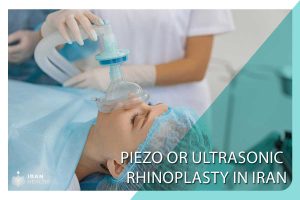First of all, don’t forget the fact that rhinoplasty is not all about aesthetics. If you are acquainted with the medical word “rhinoplasty,” you are aware that most people think of it as a “nose job,” which refers to a cosmetic treatment that alters the look and contour of a person’s nose. In America, there are around 300,000 rhinoplasty surgeries done every year. People between the ages of 20-50 are the most likely to have the treatment done, and the gender balance favors women, as they make up 59% of the total patients. However, aesthetic concerns aren’t the only ones addressed in rhinoplasty. There are numerous nose problems rhinoplasty can fix.
Five Nose Problems Rhinoplasty Can Fix
Even though rhinoplasty is frequently selected for the primary purpose of bringing a person’s facial features into harmony, the procedure can also address structural issues that impede a person’s ability to breathe normally. It is also common for surgery to address both the function and the aesthetics of the nose.
The physiology of the nose is highly complicated, and rhinoplasty, which is often considered one of the most sophisticated cosmetic operations and requires an in-depth understanding of facial anatomy, is typically regarded as among the most challenging procedures. However, it has the potential to be a very successful method. Today’s article will review five of the most frequent problems that may be corrected with rhinoplasty.
Deviated Septum Problem
The septum is a piece of cartilage that runs along the middle of your nose. It should be situated in the middle so that all of the channels for airflow are about the same size. You may have been born with unequal passageways or had an accident such as a broken nose or another kind of trauma that forced the septum to one side.
If you lead an active lifestyle, having a deviated septum surgically corrected – one of the nose problems rhinoplasty can fix – may help increase the flow of air into your lungs, which in turn can enhance your cardiovascular health. Rebuilding the structure of your nose via rhinoplasty might help maintain the septum in its proper position.
Broken Nose
One of the most prevalent medical reasons for rhinoplasty that is not related to aesthetic concerns is the correction of damage caused by a broken nose which is one of the nose problems rhinoplasty can fix. This may include altering the cartilage in your nose or resetting fractured bones in your nose. When treating the symptoms of a broken nose with rhinoplasty, the surgeon would often prioritize maintaining the patient’s ability to breathe above improving the nose’s appearance. Corrective rhinoplasty is the term used to describe this procedure.
Nasal Humps
Nasal humps are other nose problems rhinoplasty can fix forever. Because unfixed fractures may also result in a hump on the nose, having a significant hump on the bridge region of your nose may give the appearance that your nose has been broken. The hump, on the other hand, may be caused by extra cartilage in the nose, even if the nose has never been broken. Rhinoplasty can eliminate excess tissue, flatten the bump on your nose, and contour your nose.
Nostril Shape
The form of one’s nostrils is a matter of personal preference. Specific individuals believe that theirs is too small or too broad or that it falls short in some other way. Because the whole physiology of the nose has to be taken into consideration during rhinoplasty, it is a reasonably invasive variant of the surgery that may change the shape of the nostrils. The degree to which your nostrils may be reshaped depends, at least partly, on how well your lungs operate. Reshaping your nostrils is among the nose problems rhinoplasty can fix for you.
Nose Large Tip
The typical form of a bulbous nose might give the impression that your nose is out of proportion with the rest of your face. As with nasal humps, cartilage may be removed, and a standard method for modifying the tip of the nose accesses cartilage from inside the nose. This allows the scars that come from rhinoplasty to be concealed from sight. As part of the treatment, excess cartilage is removed, and the remaining cartilage at the tip of the nose is reshaped using sutures and an open rhinoplasty technique.
Differences Between Rhinoplasty and Septoplasty
Aside from being one of the most prominent aspects of the face, the nose is also significant to breathing since it regulates how much air enters and exits the lungs. Visible nasal abnormalities are also often linked to underlying problems inside the nose. Rhinoplasty and septoplasty are the two primary subspecialties under “nasal surgery.” The external look of the nose is the primary emphasis of rhinoplasty, while septoplasty corrects defects in the inside of the nose.
Get in touch with us or arrange an appointment for online consultation if you have any questions about nose job in Iran, including rhinoplasty, septoplasty, and any other procedures that may be appropriate for you. We will prepare you for the process by discussing your choices, expectations, and concerns using our combined 30 years of cosmetic and reconstructive surgery expertise. This will undoubtedly help you feel more at ease throughout the procedure.
Last But Not Least
Patients may be dissatisfied with the results of their initial rhinoplasty. Suppose it is something that the first surgeon cannot fix. In that case, these patients are frequently referred to a revision rhinoplasty surgeon due to the surgeon’s extensive training and experience with secondary rhinoplasty procedures. Open rhinoplasty is always the method of choice for revision surgeons because it gives them a direct view while correcting irregularities in the bone and cartilage.



